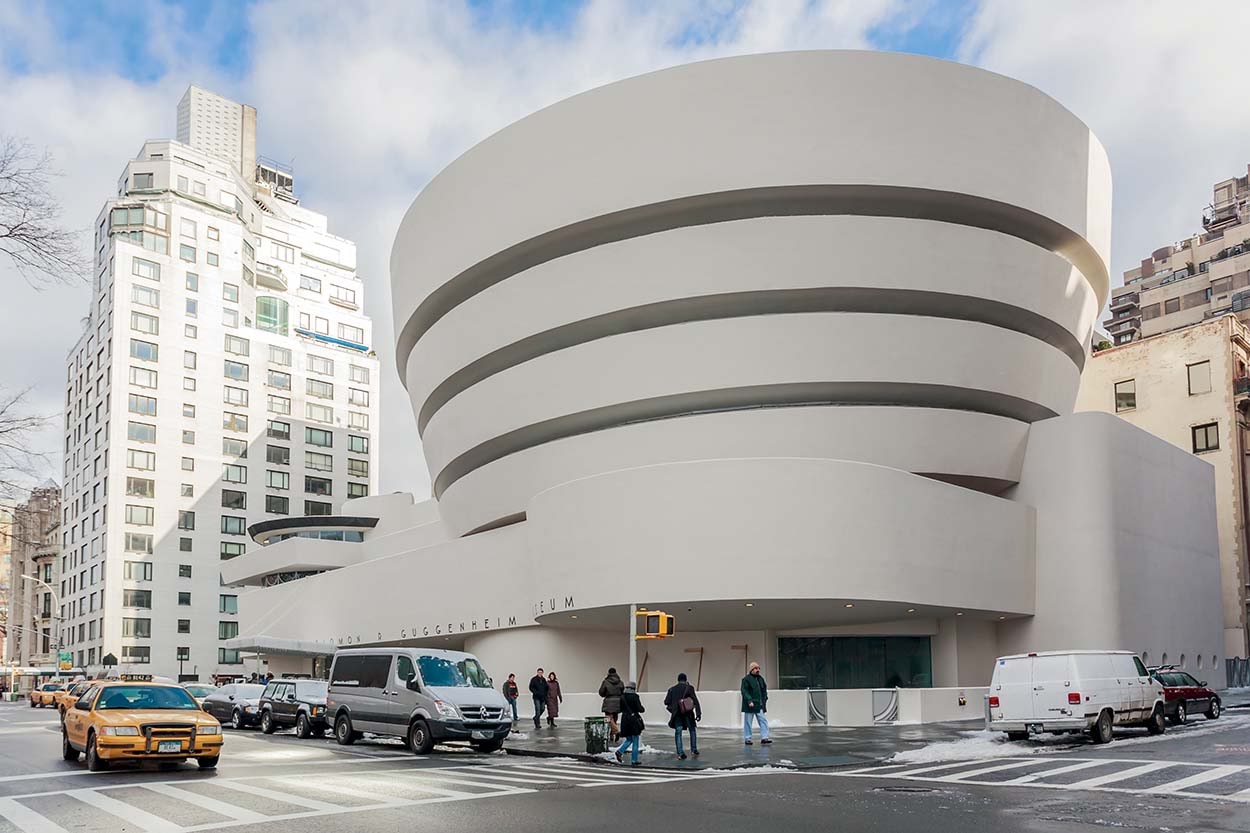
Knowledge and awareness: the foundations of restoration work
The premise to safeguarding contemporary architecture is a thorough survey of the building from a historic, materic and construction perspective: Mapei’s proposal
The premise to safeguarding contemporary architecture is a thorough survey of the building from a historic, materic and construction perspective: Mapei’s proposal
Firstly, let’s clarify the topic: what do we mean by the restoration of “modern” architecture and what are the differences with respect to an intervention to repair concrete?
If by restoration we mean any intervention carried out on monuments, architecture, works of art and other objects of artistic, historical or anthropological interest following its completion, then we can safely say the same approach should be adopted when restoring a modern building as when we are faced with a building or structure recognised as being of historical and architectural interest. The real difference is only “technological”, which means the construction methods and materials used in the construction of a modern building whereby the materials used are mainly reinforced and non-reinforced concrete and the elements used to build it are very often perforated bricks or blocks. When deterioration involves rebar, a building’s structural properties can drop off very quickly and its stability can be seriously compromised. When deterioration affects the surface of exposed-finish concrete on the other hand – such as decorative concrete with coloured aggregates, for example – any work to reinstate or refurbish the concrete will affect its aesthetic characteristics. These types of problems are not normally found with historic buildings where the masonry was made from solid bricks, stone and/or tuff, or were covered with render that “aged” along with the building, but at the same time protected the structure from bad weather and atmospheric aggression. At the start of the 20th century reinforced concrete became a game-changer, as did the construction of increasingly slender structures, where the concrete was left with an exposed finish to exalt the patterns left by formwork, often in wood. It was only later that people realised that the materials used, initially thought to be resistant and long-lasting, could deteriorate quite easily if not protected sufficiently, mainly due to oxidation of the rebar. And this is when the idea of refurbishing and restoring reinforced concrete was born – conceived as the reintegration and protection of the parts that had deteriorated and, in parallel, the restoration of modern buildings – on those structures designed by illustrious architects and engineers. The restoration of modern architecture, however, cannot be based on recipes passed down through the experience of restorers because the materials are so different. Lime-based mortars were no longer being used, but rather cementitious materials, which meant having to adopt different intervention and application methods. The common denominator, however, is still that of preserving existing buildings, be they part of our heritage or a modern listed building.What are the rules in order to develop and plan a restoration intervention of this type correctly?
Whether you are dealing with an historic building or a more recent build, when carrying out an upgrade, the main types of intervention regard structural strengthening, refurbishment and renovation (including conservative renovation), as well as restoration work.As already mentioned, while with restoration work on ancient buildings you could rely on recipes passed down through the experience of old restorers, when restoring modern and contemporary architecture it is a more scientific approach involving lab technicians rather than craftsmen who, just like we have already been doing for many years at Mapei, formulate specific, certified products that guarantee a certain level of adhesion when applied in thin layers, resin-based materials and organic primers that guarantee protection for rebar within the structure, that create a powerful bond between the new repair mortars and the original cementitious structure, including when applied in layers just a few millimetres thick.
The guidelines that need to be followed, that have an influence on which materials should be chosen, are also aesthetic and differ from those applicable to historic buildings The rigours of time lend an air of poetry and authority to ancient buildings, whereas with modern buildings they become more like a sign of deterioration and poor maintenance. With restoration work on modern architecture, the form and original appearance prevail over the effects of time. And this is why maintenance work and specialised engineers and contractors are also fundamental components when the time comes to intervene on a modern listed building.
How important is it to understand modern architecture and to be familiar with its materials and structures to come up with a really effective design proposal?
An essential aspect of any activity focused on safeguarding and conserving any type of building or structure - be it ancient, modern or contemporary - are surveys, research and expanding our knowledge and awareness of value and quality, the foundations to successfully tackling any type of restoration work. Going more into detail, the conservation and restoration of our modern architectural heritage requires analytical knowledge of the consistency of the building or structure which, within its very materiality, incorporates historic, artistic and cultural values. A direct comparison with the technical aspects is extremely important when dealing with buildings and structures from the 20th century because experimental technical solutions, that had not been fully tested, were often adopted which at times, over the years, proved to be deficient or fragile. The process regarding the safeguarding of contemporary architecture always presupposes a certain level of knowledge of the building from an historic, materic and construction perspective and covers aspects such as aligning it with structural safety standards and the requirements of conservation work.
What is Mapei proposing for the restoration of modern buildings?
As I said several times previously, there aren’t any substantial differences between restoring an ancient masonry building and restoring more modern buildings. Once the cause or causes of the problem or the deterioration of one or the other types of building or structure have been clearly identified, Mapei’s strength is the availability of an extensive range of products to help specifiers, designers and installers identify which are the most suitable materials to use for the conservative renovation and restoration of each type of building.
Mapei’s Renovation and Restoration Line has a team of specialists that provides a daily consultancy service to perform site surveys, draft work reports and technical specifications and carry out cost analyses as a support for specifiers, designers and contractors, including those specialised in restoration work. And last but not least, the team interfaces with experts from local heritage bodies to discuss the purely technical aspects.
One of the strong points of Mapei is that it works alongside architects, designers and specialised contractors, including during the delicate diagnostic phase which focuses on investigating not only the chemical and physical composition of the materials originally used in the construction of a building, but also the causes that triggered the momentary state of deterioration. After completing this diagnostic phase it is then possible to identify the correct approach and choose the most suitable materials and systems in order to proceed with the work and finally apply the aforementioned materials and systems, whether working on historic buildings or more modern ones.
Mapei, through its products, plays a key role in the restoration of important and “iconic” modern or contemporary buildings all over the world. Would you like to tell us about some of them?
As far as modern and contemporary architecture are concerned, amongst the many examples of restoration works carried out with the technological contribution from Mapei, one of the most significant is undoubtedly the restoration of the Solomon R. Guggenheim Museum in New York designed by Frank Lloyd Wright in 1943, one of the most important works of architecture from the 20th century.
Mapei’s Milanese spirit could not have been better expressed than through the conservation of a host of modern buildings in the city that witnessed the birth of the company back in 1937. These include buildings designed by Giò Ponti such as the Pirelli Tower, the Church of Santa Maria Annunciata at San Carlo Borromeo Hospital, the “Ship” and “Clover” buildings at Milan Polytechnic (the latter being “The most beautiful main lecture hall in the world” according to the architect Renzo Piano), as well as the former Pavilion 3 at the Milan Exhibition Centre, the city’s first ever “Sports Centre” designed by the engineer and architect Paolo Vietti Violi and inaugurated in April 1923.
Completed in 2010, important restoration and redevelopment works with Mapei products again playing a leading role, were those carried out on Milan Central Station, designed by the architect Ulisse Stacchini and inaugurated in 1931.









